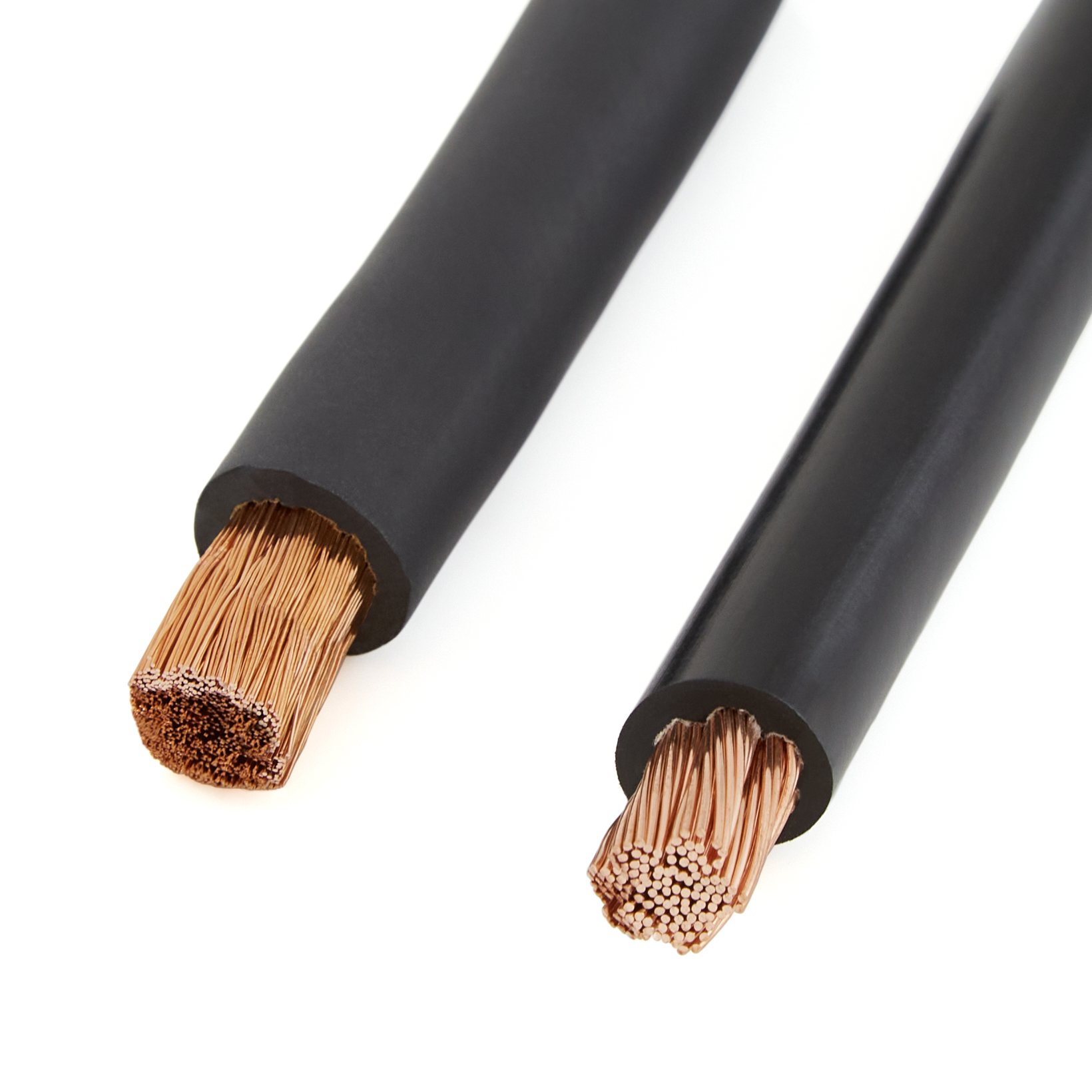Welding Cable Instead of Battery Cable—A Viable Option
It’s a challenge often faced often by vehicle upfitters, especially when working with complex electrical systems: How can I find a battery cable that is flexible enough to bend and turn in sharp angles and tight spaces? The answer may be to use welding cable instead.
Welding cable, despite its name and formally intended use, shares key characteristics with battery cable. And, as a general rule, welding cable is generally more flexible, bendable, and easy to install in tight spaces.
Here’s a look at the two cable types.
Battery Cable VS Welding Cable
Battery cable, which is designed to connect batteries to the starter, consists of multiple stranded copper conductors braided to form a wire that is wrapped in a protective jacket to shield against oil, grease, acids and other environmental degradations. It is typically rated for 60 volts, though in some cases higher.
Welding cable is similarly constructed with stranded wires and protective jacketing. It typically carries a voltage rating of up to 600 volts, easily meeting requirements for use as battery cable. But the key advantage of welding cable—its flexibility—is that it often has more conductor strands than battery cable of equivalent gauge.
For example, see the cross-section photos below. On the left is 2-gauge welding cable from Kalas, which shows a much higher strand count than the standard SGT battery cable at the right (also 2-gauge). It is this fine stranding that makes the welding cable easier to bend.
Higher strand count doesn’t just make the cable flexible — it also improves resistance to vibration fatigue and makes cable routing far easier in compact or irregular spaces.
Welding Cable: A Reliable Alternative to Battery Cable
Welding cable is highly compatible with battery cable applications:
- Both types of cable have similar amp ratings for their equivalent gauge sizes, making it easy to select and install either type.
- Battery cable and welding cable both operate at 60 volts (welding cable can also be used for higher voltage applications not covered in this article).
- Battery and welding cables are both constructed to resist oil, grease, and abrasion.
- Welding cable matches and often exceeds the flame retardancy standards of battery cable.
- Welding cable performs within the same operating temperature range as typical battery cable (-50°C to 105°C).
- In many cases, welding cable is SAE J1127 compliant, just like automotive battery cable — so you’re not sacrificing compliance or safety standards by choosing it.
Welding cable typically costs more than battery cable. However, the need for flexibility can offset the cost difference. Welding cable’s flexibility and ability to fit into tight spaces may also enable installers to use less length and wire weight per build, further offsetting cost through efficiency.
When to Consider Using Welding Cable Instead of Battery Cable
Battery cable has its place — especially when cost or simplicity is a priority. Standard battery cable is available in a wide range of gauges and is ideal for:
- Basic starter, battery, and ground connections.
- Applications where the cable run is short and routing is simple.
- Environments where tight bends aren’t a factor.
Welding cable is the ideal choice for:
- Applications that require the cable to bend around tight spaces.
- Installations expected to be subjected to significant vibration such as agricultural and construction vehicles.
- Applications requiring a high flammability rating (i.e. welding cable that meets UL 1581).
Note: For applications requiring tolerance to extreme cold, be sure to check out Arctic Ultraflex° battery cable from Polar Wire, which is rated down to -55°C.
The Bottom Line
Welding cable isn’t just for welders — it's an excellent option to use for automotive battery cable. If you need rugged durability, extreme flexibility, or high-current handling, it's worth considering.
Waytek stocks both battery cable and welding cable in a wide range of gauges, colors, and insulation types — including trusted brands like General Cable, Kalas, and Polar Wire. Whether you're upgrading an electrical system, installing a power inverter, or building custom harnesses, you’ll find the right cable for your job at Waytek.
Subscribe Now
Subscribe and be the first to know when new articles are published.

